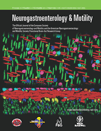The relationship between glial distortion and neuronal changes following intestinal ischemia and reperfusion
Abstract
Background Damage to mucosal epithelial cells, muscle cells and enteric neurons has been extensively studied following intestinal ischemia and reperfusion (I/R). Interestingly, the effects of intestinal I/R on enteric glia remains unexplored, despite knowledge that glia contribute to neuronal maintenance. Here, we describe structural damage to enteric glia and associated changes in distribution and immunoreactivity of the neuronal protein Hu.
Methods The mouse small intestine was made ischemic for 3 h and reperfused from 1 to 12 h. Immunohistochemical localisation of glial fibrillary acidic protein (GFAP), Hu and TUNEL were used to evaluate changes.
Key Results At all time points glial cells became distorted, which was evident by their altered GFAP immunoreactivity, including an unusual appearance of bright perinuclear GFAP staining and the presence of GFAP globules. The numbers of neurons per ganglion area were significantly fewer in ganglia that contained distorted glia when compared with ganglia that contained glia of normal appearance. The distribution of Hu immunoreactivity was altered at all reperfusion time points. The presence of vacuoles and Hu granules in neurons was evident and an increase in nuclear Hu, relative to cytoplasmic Hu, was observed in ganglia that contained both normal and distorted glial cells. A number of neurons appeared to lose their Hu immunoreactivity, most noticeably in ganglia that contained distorted glial cells. TUNEL reaction occurred in a minority of glial cells and neurons.
Conclusions & Inferences Structural damage to gliofilaments occurs following I/R and may be associated with damage to neighboring neurons.




